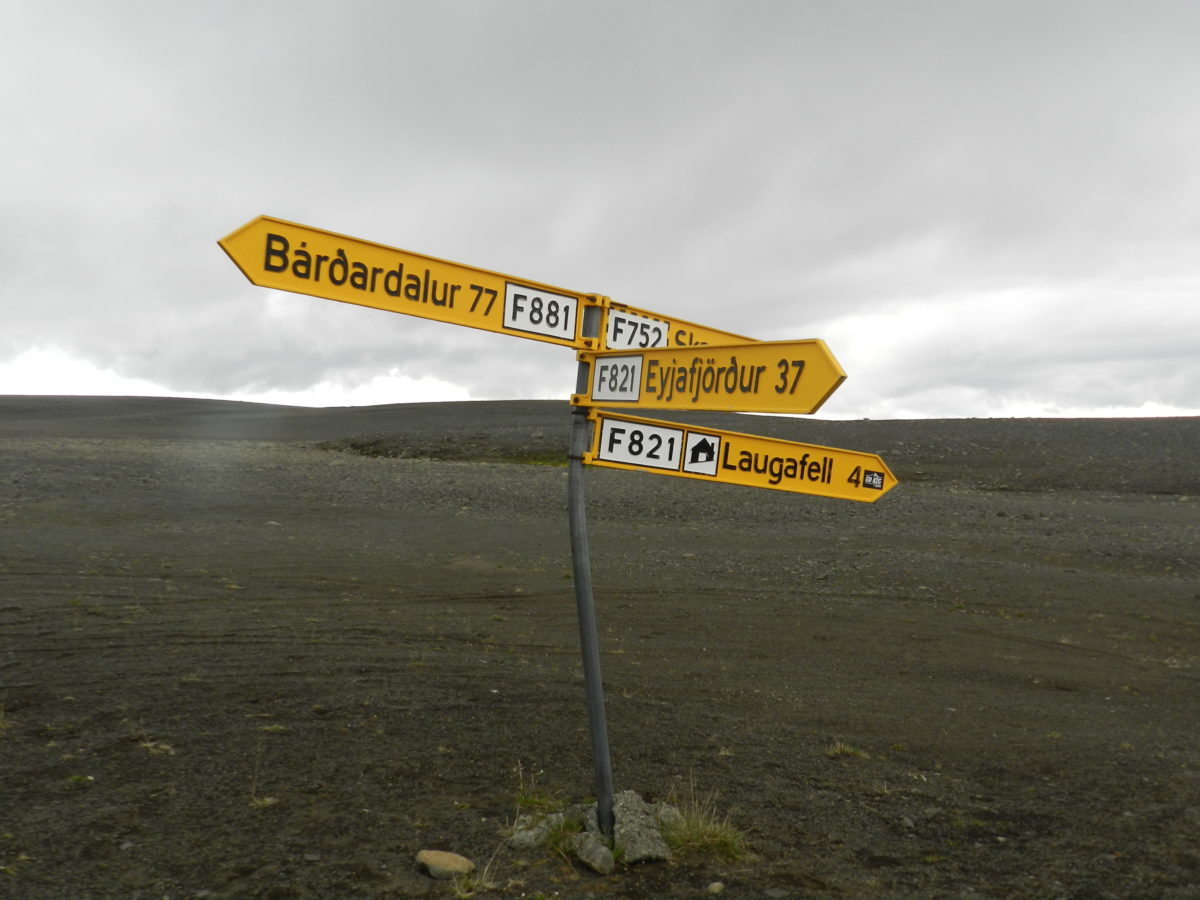There are a couple of good reasons why I shipped my old Land Rover Defender to Iceland. The first is the economics. Because it is outfitted for expedition travel, complete with a rooftop tent, a fridge, cooking gear and lots of storage for food etc., so I am insulated from the cost of car rental, accommodation and restaurants, all of which are very expensive in Iceland. For this reason many Europeans bring their own vehicles to Iceland on the ferry that comes from Copenhagen via the Faroe Islands. Most of these vehicles are RVs of some sort, and many are heavy duty off-road trucks, including lots of Defenders.
With a good 4×4 one has access to the more out-of-the-way sites that abound in Iceland along the so called “F Roads”. ‘Fjallið’ is Icelandic for ‘mountain’, hence the ‘F’ in ‘F Road’, and these are not really roads at all, but narrow unpaved tracks up hills, across unbridged rivers and over lava fields. These F Roads are tierra prohibida to normal rental cars, and there are signs posted at the beginning of each one to remind drivers of the risks.
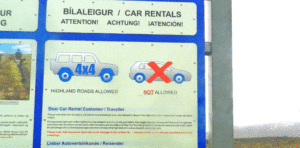
Following route consultations with Ice-Rovers in Reykjavik we chose the F35 to venture into the highlands to cross from the south coast to the north coast because it is shorter than the much more arduous F26 option further east. I have learned that Icelanders do not know or care much about the road numbers, they know them by where they go, Kjölour is a plateau in the highlands between the glaciers Langjökull and Hofsjökull. at an altitude of about 600–700 metres and the F35 is known as the “Kjolour route”.
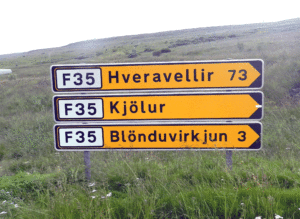
The Iceland highlands along the Kjölur route are a combination of exotic and bleak. Much of it was a lava field, completely devoid of any vegetation save thick moss that covers the rocks. The road in was a rough track across a barren lava field Along the F35
On the way in we could see two of Iceland’s glaciers off in the distance: Hofsjokull to the east and Langsjokull to the west. Our destination for the night was Hveravellir, a natural hot spring at 650 metres. Typical of many highland refuges in Iceland, there was a chalet type structure with a cafe and shared hostel with common cooking/cleaning area,as well as a couple of private “rooms” in an ATCO style industrial trailer. All very basic really.
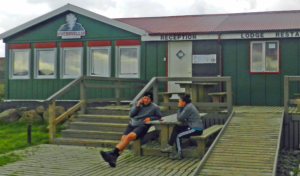
The Hveravellir Chalet
When we arrived the weather was terrible; it had rained most of the way in and there was a strong northerly wind blowing. It might have been about 5 deg C. The hostel was fully booked and the ‘rooms’ in the ATCO-type trailers cost CAD 250+. No problem, we did not need them because we are CAMPING. We just set up our tents in the lee of the largest building we could find and set about cooking ourselves dinner. Lamb fillet, herbed potatoes, broccoli, all washed down with some of the lovely Brunello di Montalcino Italian wine that Maurice had brought with him. After clean up we were joined for some rum and conversation by a German traveller that was there with his family in a rented camper van.
It was a cold, wet night, but the next morning dawned sunny and kind of warm, time to hit the natural hot spring. Hrevellir is quite an active geothermal area, with lots of vents and boiling mud across a wide area. The source for the soaking pool is a hot river that runs about 70-80 degrees C and which is mixed with cool water on the way in to maintain a temperature of about 38 deg. and prevent anyone from getting boiled.
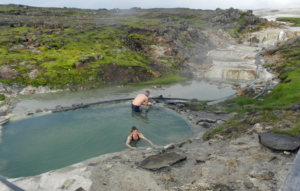
Maurice extracting himself from Hreravellir Hot Spring. Don’t know who the woman is.
Evidence of historical human habitation includes an old turf house. The early settlers brought this shelter strategy with them from Norway in the 9th century and continued to use it for centuries because of the lack of wood.
Hreravellir Turf House
Two days of driving and we did not see a tree until we descended toward Sauðárkrókur, a town in the Skagafjörður region of north Iceland, our next destination.

